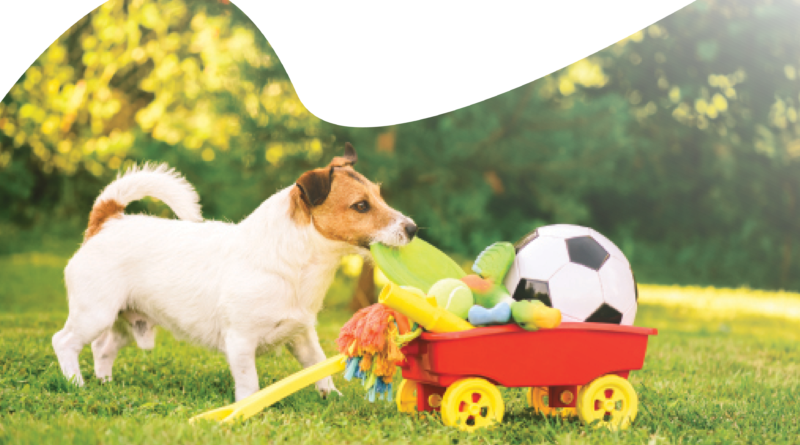Giving Choices = Better Behavior – Dogster
Dine in or carry out? Go to the gym or out for a run? We make lots of daily decisions without much thought. But what about our dogs? We decide what they eat, where they sleep, whether they have a yard and when they get walks. We decide when they play (and usually who with) and even where and when they do their business. All these restrictions can make for unhappy dogs. But by giving our dogs more choices we improve how they feel, and better behavior often follows.
Dogs are faced with the daily challenges of living in a human-centered world, so it’s up to us to help them get along. We can support our dogs by giving choices and opportunities.
Applied ethologist Kim Brophey says, “Few modern dogs were evolutionarily, naturally prepared for the life of a ‘pet’ dog. The autonomy and instincts, the choices and actions that dogs have been historically developed for are not only no longer valued in most cases but even considered ‘problem’ behaviors.”
Take, for example, the terrier’s need to hunt or the Border Collie’s need to herd. When the terrier digs up the garden or the Border Collie nips at children’s heels, it’s labeled problem behavior from a “bad” dog. But dogs need outlets for their energy and time to just be dogs.
Kim encourages us to “Let them destroy their own belongings for the thrill of it; let them chew sticks and pinecones without diving into their mouths. We can let them spend as many hours as they want to in the fenced backyard, enjoying the elements unsupervised; take them for long hikes in the woods on 30-foot leashes in the middle of nowhere and let them be in the moment away from human insanity long enough to remember who they are in their bones.”
Let your dog problem solve
Choice empowers our dogs, encourages resilience and autonomy and helps boost confidence and independence. It expands their ability to make good choices without direction; a practical skill that stops us from micromanaging their behavior. Dogs are good at problem solving on their own if we let them.
Certified dog behavior consultant Laura Donaldson advocates taking choice a step further by giving dogs agency, which is choice on steroids. Laura says, “I define agency as dogs learning that they can influence their environment by using their behavior. They are not just responding to human ‘commands’ about what to do and when to do it. First and foremost, give them the time and space to think, so that they can problem-solve and make good decisions.”

Easy ways to give choice
Giving dogs choices means providing at least two good options that are healthy, safe and don’t reinforce unwanted behaviors. Here are some simple ways to get started:
- Let your dog follow his nose and choose the route on walks.
- Give him several comfy places to sleep instead of just one.
- Let him pick his own toys.
- If he’s not feeling a particular training session, stop for the day.
- Let your dog choose to be petted or not: If he walks away, don’t force it. If he wants more, you’ll know.
- Not all dogs want to be social butterflies. So instead of making him hang out with guests, let him go chill under the table if he wants or provide him a dedicated quiet space.
- Let him go the other way when a stranger or unfamiliar dog approaches on walks. Don’t force it.
By respecting dogs’ decisions, we help prevent problems like learned helplessness where our dogs feel like they have no control over their environment and flooding, which happens when a dog is forced to experience something they find scary. Both make for unhappy dogs.
Certified dog behavior consultant Allie Bender explains, “A number of maladaptive behaviors are exacerbated by or can even be caused by a lack of choice and/or control. When we give our dogs the opportunity and skills to make better choices, we open the door to work with them, instead of fighting against them, to solve behavior issues.” It’s a win-win: When dogs have more control over their lives we see fewer undesirable behaviors.

Check in with your dog
In any given situation, check your dog’s body language. If he doesn’t want to do something, give him the freedom to opt out. Never underestimate your dog’s attempts to communicate with you that he’s uncomfortable.
Reading a dog’s body language is a big picture kind of thing, but here are a few pointers on specific body parts:
Head should be upright and confident; turned away is avoidance or deferent, and a lowered head signals fear or submission.
Relaxed ears can either be forward or back; pinned back can mean submission or fearfulness while pricked forward indicates arousal (could be friendly or not).
Eyes should be soft and may even be squinty; averted eyes could mean fear or submission; and while eye contact is good, hard stares could be a sign of trouble.
The body should be loose, upright and confident; tense or lowered postures can mean a dog is feeling afraid, anxious or even aggressive.
Ideally the tail is carried low to medium, with a relaxed friendly wag; a tail carried high indicates arousal (could be play or aggressive) and tucked indicates fear or submission.
Observing our dogs’ decision-making processes gifts us with daily opportunities to learn about their preferences, personalities, wants and needs so we can help them live their best lives. A solid combination of training life skills, meeting their physical, emotional and mental needs and providing choices helps our dogs feel better. And when they feel better they behave better.

Simple Toy Preference Test
This can be done often and is very helpful for creating a toy ladder (order of relevance to your dog) for reinforcing desired behaviors:
- Gather three to five new toys. Go for variety! Dogs see blue and yellow best, so choose those colors when possible.
- Where your dog can’t see you, lay the toys out on the floor a few feet apart.
- Invite your dog to explore the toys, taking mental note of which one he targets first, second and so on.
- Stay out of the way! This is a fun, independent activity, and you don’t want to skew the results by your proximity to him or certain toys with your body language or verbal cues.
Check That Body Language
Not exactly sure how your dog is feeling? Here are some great resources on canine body language:


For more reading, check out sister publication Whole Dog Journal’s articles on body language at: whole-dog-journal.com/category/behavior/body-language/.



